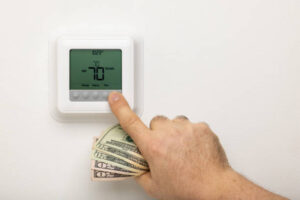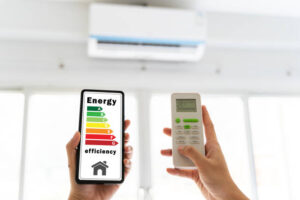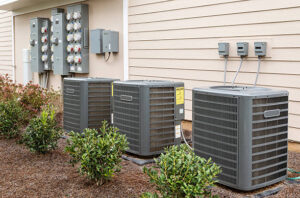Ever wondered how much fresh air is enough to keep indoor spaces healthy and comfortable? Let’s dive into the world of ventilation rates – the unsung hero of indoor air quality. Ventilation rate refers to the amount of outside air circulated into a space, ensuring that we breathe in clean air, free from pollutants, and maintain an environment that’s both comfortable and energy-efficient.
From homes to offices and classrooms, the right ventilation rate is a balancing act influenced by the space’s size, the number of people, and the activities performed. Join us as we unpack why ventilation matters, how it’s measured, and the steps you can take to ensure your space has just the right amount of fresh air flowing through. Whether you’re a homeowner, a business owner, or just someone curious about creating healthier indoor environments, understanding ventilation rates is your first step towards breathing easier.
What is Ventilation Rate?

Ventilation rate, fundamentally, represents the volume of outside air introduced into a space within a specified time frame, typically measured in cubic feet per minute (CFM) or liters per second (L/s). This metric is crucial for maintaining indoor air quality, ensuring the dilution and removal of indoor pollutants, and providing a comfortable and healthy environment for occupants. The determination of an appropriate ventilation rate is guided by various factors including the size of the space, the number of occupants, and the activities performed within the space.
Building codes and standards, such as those set by ASHRAE (American Society of Heating, Refrigerating and Air-Conditioning Engineers), often specify minimum ventilation rates to safeguard occupant health and comfort. In essence, understanding and applying the correct ventilation rate is key to achieving effective air exchange, which is vital for both indoor air quality and energy efficiency in buildings.
Why is the Correct Ventilation Rate Important?
The right ventilation rate is vital for several reasons. Firstly, it helps in reducing pollutants inside our homes or offices, making the air safer to breathe. This is especially important because clean air can help us avoid health problems.
Secondly, it prevents mold growth by keeping indoor humidity levels low. Mold can be harmful to our health, so preventing it helps keep us safe. Thirdly, the correct ventilation rate is key for energy efficiency.
It ensures that air exchange is optimized, meaning we get fresh air without wasting energy. This helps in reducing our energy bills and is better for the environment. In summary, maintaining the right ventilation rate is essential for our health, safety, and wallet.
For Health by Reducing Pollutants
Proper ventilation keeps the air fresh by removing harmful pollutants. This means less risk of respiratory problems and allergies, making indoor spaces healthier for everyone.
For Safety by Preventing Mold Growth
Adequate ventilation helps control moisture, which prevents mold from growing. Since mold can cause health issues, stopping it before it starts keeps indoor environments safer.
For Energy Efficiency by Optimizing Air Exchange
Correct ventilation ensures that air is exchanged efficiently, so energy isn’t wasted. This optimization means lower energy bills and a smaller carbon footprint, making it better for both your wallet and the planet
Related reading: What is the Best Way to Cut Home Heating or Cooling Bills?
How is Ventilation Rate Measured?

Ventilation rate is measured in two main ways: air changes per hour (ACH) and cubic feet per minute (CFM). ACH tells us how many times the air in a room is replaced in an hour, which is useful for understanding overall air freshness. CFM measures the actual volume of air flowing into a space per minute, providing a direct insight into the effectiveness of ventilation systems.
Both measurements are crucial for ensuring that a space receives the right amount of fresh air to maintain good indoor air quality and comfort.
In Air Changes Per Hour (ACH)
ACH measures how often the air in a space is completely replaced in one hour. This metric is crucial for assessing whether the air in a room remains fresh and healthy.
In Cubic Feet Per Minute (CFM)
CFM quantifies the volume of air that flows into a room every minute. This measurement is essential for evaluating the efficiency and effectiveness of a ventilation system in maintaining optimal indoor air quality.
What Factors Influence the Correct Ventilation Rate?
The correct ventilation rate is influenced by several key factors. The size of the space in square footage plays a major role, as larger areas require more air to maintain quality. Occupancy levels also matter, with more people meaning more air is needed to dilute pollutants.
Additionally, the types of activities performed in the space, such as cooking or exercising, can increase the need for ventilation to remove odors and excess moisture. Understanding these factors is essential for determining the right ventilation rate to ensure a healthy and comfortable indoor environment.
Size of the Space in Square Footage
The size of the space directly impacts the needed ventilation rate. Larger areas require a greater volume of air to maintain a fresh and healthy environment. Adjusting ventilation according to square footage is essential.
Occupancy Levels Based on Number of People
Occupancy levels play a crucial role in determining ventilation needs. More occupants result in increased breath, body heat, and potential pollutants. Therefore, the ventilation rate must be calibrated to accommodate the number of people in the space.
Activities Performed, e.g., Cooking, Exercising
The specific activities conducted within a space significantly influence its ventilation requirements. Activities such as cooking or exercising introduce additional moisture, odors, and pollutants, necessitating enhanced ventilation to sustain optimal air quality.
What are the Recommended Ventilation Rates?

To ensure healthy and safe indoor environments, specific ventilation rates are recommended. For homes, the guideline is 0.35 air changes per hour (ACH), but not less than 15 cubic feet per minute (CFM) per person. In office settings, the recommendation increases to 20 CFM per person to accommodate the higher occupancy and activity levels.
Classrooms, recognizing the critical need for clean air to support learning, should maintain 15 CFM per person. These standards, set by authorities like ASHRAE, are designed to balance air quality with energy efficiency, tailoring ventilation to the needs of different spaces and their usage.
For Homes: 0.35 ACH but Not Less Than 15 CFM per Person
For residential spaces, it’s recommended to achieve 0.35 air changes per hour (ACH), while ensuring a minimum of 15 cubic feet per minute (CFM) per person. This standard helps in maintaining the air in homes fresh and pollutant-free.
For Offices: 20 CFM per Person
In office settings, where occupancy and activity levels are higher, a ventilation rate of 20 CFM per person is advised. This ensures a healthy and productive workspace by efficiently circulating air.
For Classrooms: 15 CFM per Person
Classrooms require a specific focus on air quality, with a recommended rate of 15 CFM per person. This supports a learning environment that is both healthy and conducive to concentration and learning.
Related Reading: What Is Ideal Static Pressure In HVAC?
How Can One Achieve the Correct Ventilation Rate?
Achieving the correct ventilation rate can be accomplished through natural and mechanical means. Natural ventilation leverages windows and vents to allow fresh air to flow into a space, making the most of wind and temperature differences. On the other hand, mechanical ventilation involves using HVAC systems to control and distribute air throughout a building effectively.
Both methods are crucial for maintaining indoor air quality, and the choice between them depends on the specific needs of the space, such as its size, occupancy, and the activities performed within. Regular maintenance checks and adjustments based on current occupancy levels are essential for ensuring that ventilation systems continue to operate at their optimal rate, thereby providing a healthy and comfortable environment for occupants.
Through Natural Means Like Windows and Vents
Utilizing windows and vents allows for ventilation by harnessing natural forces such as wind and temperature gradients. This approach is not only energy-efficient but also enhances indoor air quality by promoting the natural exchange of indoor and outdoor air.
Through Mechanical Means Like HVAC Systems
Employing HVAC systems offers a more controlled form of ventilation. These systems use fans and ductwork to systematically distribute fresh air across a building. Ideal for larger or complex spaces, mechanical ventilation ensures consistent air quality and comfort levels where natural methods might fall short.
What are the Challenges in Maintaining the Correct Ventilation Rate?

Maintaining the correct ventilation rate presents several challenges. Seasonal variations can significantly affect both indoor and outdoor air quality, requiring adjustments to ventilation strategies throughout the year. Additionally, varying occupancy and activity levels within a space can lead to fluctuating demands on the ventilation system, making it difficult to consistently meet the ideal air exchange rates.
These challenges necessitate flexible and responsive ventilation systems capable of adapting to changing conditions to ensure the health, safety, and comfort of occupants.
Seasonal Variations Affecting Indoor and Outdoor Air Quality
Seasonal variations significantly influence both indoor and outdoor air quality, necessitating adjustments in ventilation strategies to adapt to changing weather conditions and ensure a consistently healthy indoor environment.
Varying Occupancy and Activity Levels Throughout the Day
Varying occupancy and activity levels throughout the day require dynamic adjustments to the ventilation rate. As the number of occupants and the intensity of activities fluctuate, so too must the ventilation system adapt to maintain optimal air quality and comfort.
How to Monitor and Adjust Ventilation Rates?
Monitoring and adjusting ventilation rates effectively requires the use of CO2 sensors to assess air quality and identify when changes are needed. These sensors can provide real-time data on the levels of carbon dioxide, indicating when the air in a space is becoming stale and more ventilation is necessary. Additionally, regular maintenance checks of ventilation systems help ensure they are functioning optimally and can adapt to the needs of the space.
Adjusting settings based on current occupancy levels is also crucial, as this allows for the ventilation rate to reflect the actual use of the space, ensuring air quality is maintained without wasting energy. Together, these strategies enable the creation of a healthy, comfortable, and energy-efficient indoor environment.
Using CO2 Sensors to Assess Air Quality
CO2 sensors play a critical role in monitoring indoor air quality. They provide real-time data on carbon dioxide levels, alerting when increased ventilation is necessary to maintain a healthy environment.
Regular Maintenance Checks of Ventilation Systems
Conducting regular maintenance checks on ventilation systems is essential for their optimal performance. These preventative measures help identify and resolve issues early, ensuring consistent air quality and system efficiency.
Adjusting Settings Based on Current Occupancy Levels
Adjusting ventilation settings to match current occupancy levels is key to managing air quality effectively. This approach ensures that ventilation systems adapt to the actual usage of the space, optimizing air quality while conserving energy.
In Summary
Understanding and maintaining the correct ventilation rate is essential for ensuring a healthy, safe, and energy-efficient indoor environment. Whether it’s your home, office, or a public space, getting the ventilation rate right can significantly improve air quality and contribute to the overall well-being of everyone inside. Ensuring your space has the proper ventilation helps reduce pollutants, control humidity, and manage energy consumption effectively.
Are you ready to optimize the air quality in your space? Contact our expert team today to assess and adjust your ventilation needs, ensuring your environment is comfortable, safe, and energy-efficient. Let’s help you breathe easier with the right ventilation solution tailored just for you!

